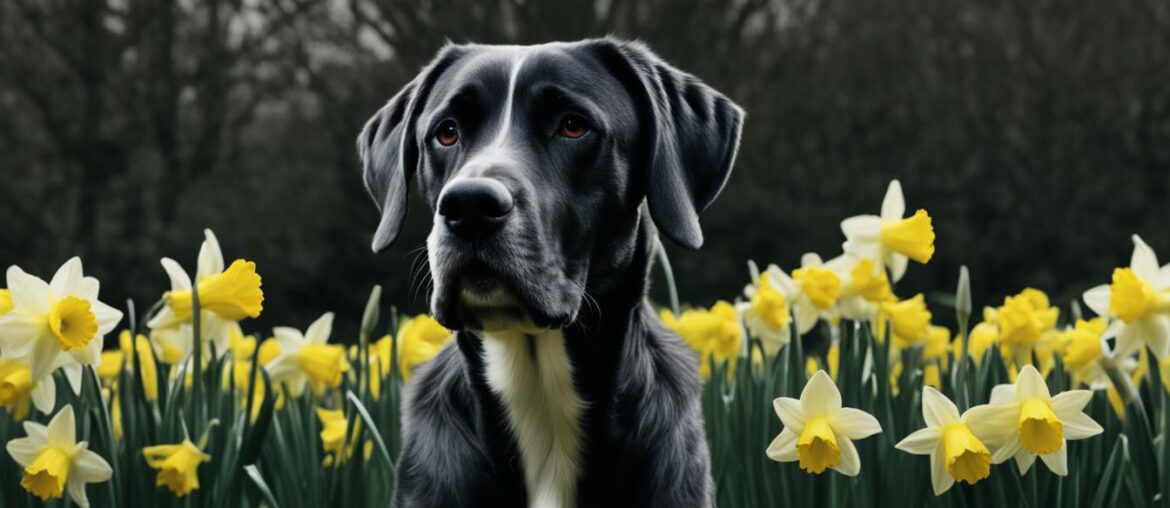Daffodils are a common spring flower known for their vibrant colors and delicate petals. However, if you are a dog owner, it is essential to be aware of the potential dangers that daffodils can pose to your furry friend. Daffodils can be toxic to dogs, especially if they consume the bulbs.
While the flowers themselves are not dangerous, the bulbs contain a toxic substance called lycorine. This compound can cause health problems when ingested, and the bulbs have a higher concentration of lycorine compared to the flowers. If a dog ingests daffodils or parts of the plant, it can lead to symptoms such as diarrhea, vomiting, abdominal pain, drooling, trembling, lethargy, and skin irritation. If you suspect your dog has eaten daffodils, it is crucial to contact a vet immediately.
Key Takeaways:
- Daffodils can be toxic to dogs, especially if they consume the bulbs.
- The bulbs of daffodils contain a toxic compound called lycorine.
- Ingesting daffodils can lead to symptoms such as diarrhea, vomiting, and abdominal pain in dogs.
- Contact a vet immediately if you suspect your dog has eaten daffodils.
- Prevention is key – keep daffodils and other potentially toxic plants out of your dog’s reach.
Signs of Daffodil Poisoning in Dogs
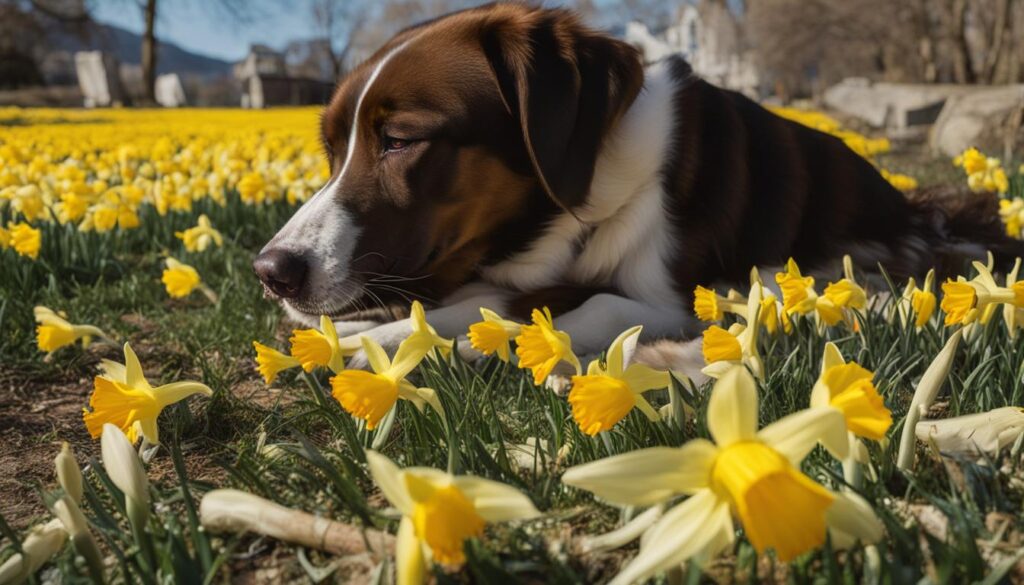
The effects of daffodil ingestion in dogs can manifest through various symptoms. Recognizing these signs is crucial in identifying daffodil poisoning and seeking immediate veterinary care. Common signs of daffodil toxicity in dogs include:
- Diarrhea
- Vomiting
- Abdominal pain
- Drooling
- Trembling
- Lethargy
- Skin irritation
If you observe any of these symptoms in your dog and suspect they have consumed parts of a daffodil plant, it is important to closely monitor their condition. Contacting a vet for further guidance and examination is vital to assess the extent of daffodil ingestion and provide appropriate treatment. Remember, early intervention can significantly mitigate the effects of daffodil poisoning in dogs.
Comparison of Daffodil Poisoning Symptoms in Dogs
| Symptom | Frequency |
|---|---|
| Diarrhea | Frequent |
| Vomiting | Frequent |
| Abdominal pain | Common |
| Drooling | Common |
| Trembling | Occasional |
| Lethargy | Frequent |
| Skin irritation | Occasional |
What to Do If Your Dog Eats Daffodil Flowers?
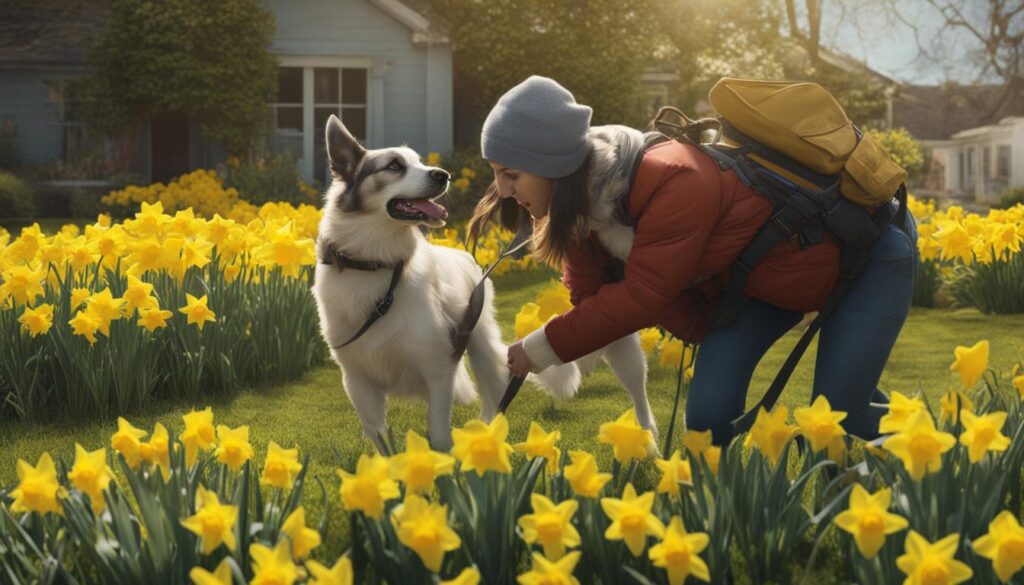
If your dog eats daffodil flowers, it is essential to take immediate action to ensure their safety. Here are the steps to follow:
-
Remove any remaining daffodil flowers from your dog’s mouth to prevent further ingestion. Be cautious and gentle while doing this to avoid accidentally injuring your pet.
-
Contact your veterinarian immediately for emergency response and guidance. They are experienced in handling cases of daffodil poisoning in dogs and can provide you with the necessary instructions for further action.
-
While waiting for veterinary assistance, keep a close eye on your dog and monitor their behavior. Note any signs of distress or discomfort.
-
Avoid administering any home treatments or remedies without consulting your vet first. Improper treatments can potentially worsen your dog’s condition or interfere with any medical procedures they may require.
-
If advised by your vet, you may offer your dog a small bowl of milk or water to dilute the toxins in their system. However, this should only be done under professional guidance, as it may not be suitable for all cases.
-
In more severe instances or if your dog exhibits severe symptoms, your veterinarian may recommend bringing your dog to the clinic for immediate medical attention. Follow their instructions carefully and prioritize your dog’s well-being.
Remember, daffodil ingestion can have serious consequences for dogs, and prompt action is crucial to minimize potential harm. Always consult a veterinarian for specific advice tailored to your dog’s situation.
Why Are Daffodils Poisonous To Dogs?
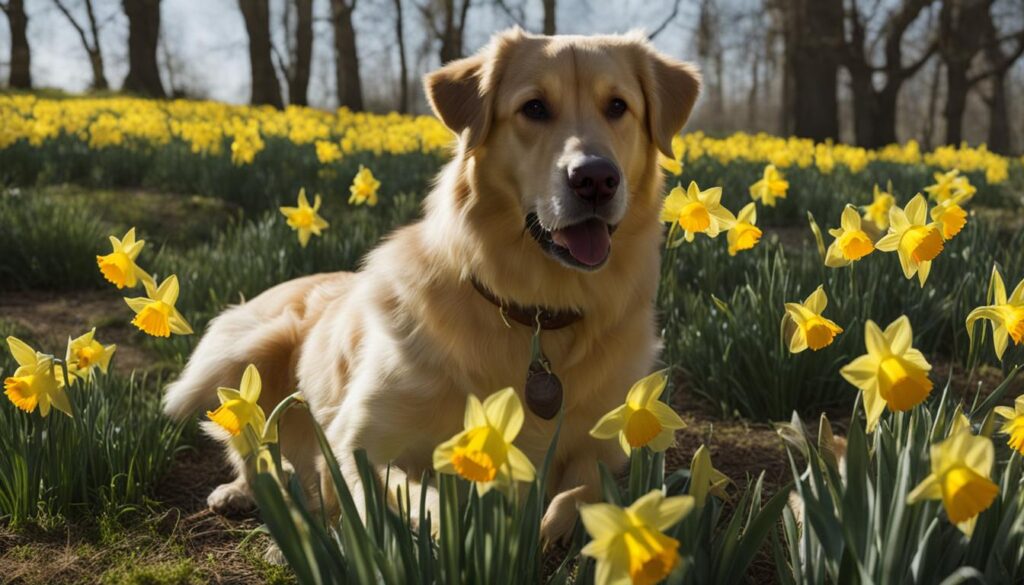
Daffodils are toxic to dogs due to the presence of harmful substances, particularly lycorine, which is found predominantly in the bulbs of daffodils. The ingestion of daffodil bulbs by dogs can lead to gastrointestinal issues. Additionally, daffodils contain calcium oxalate crystals, which can cause severe pain and irritation if consumed. It is important to note that all parts of the daffodil plant, including the bulbs, leaves, stem, and flower, are toxic to dogs.
Toxic substances in daffodils:
- Lycorine: Found mainly in daffodil bulbs, lycorine can cause gastrointestinal problems in dogs when ingested.
- Calcium oxalate crystals: Daffodils contain these crystals, which can lead to pain and irritation if consumed.
It is crucial for dog owners to be aware of the toxic nature of daffodils and take precautions to ensure their pets’ safety. This involves keeping daffodils and other potentially harmful plants out of their reach to prevent accidental ingestion. If a dog shows symptoms of daffodil poisoning, immediate veterinary care should be sought to mitigate any harmful effects and provide appropriate treatment.
What Parts of a Daffodil Are Toxic to Dogs?
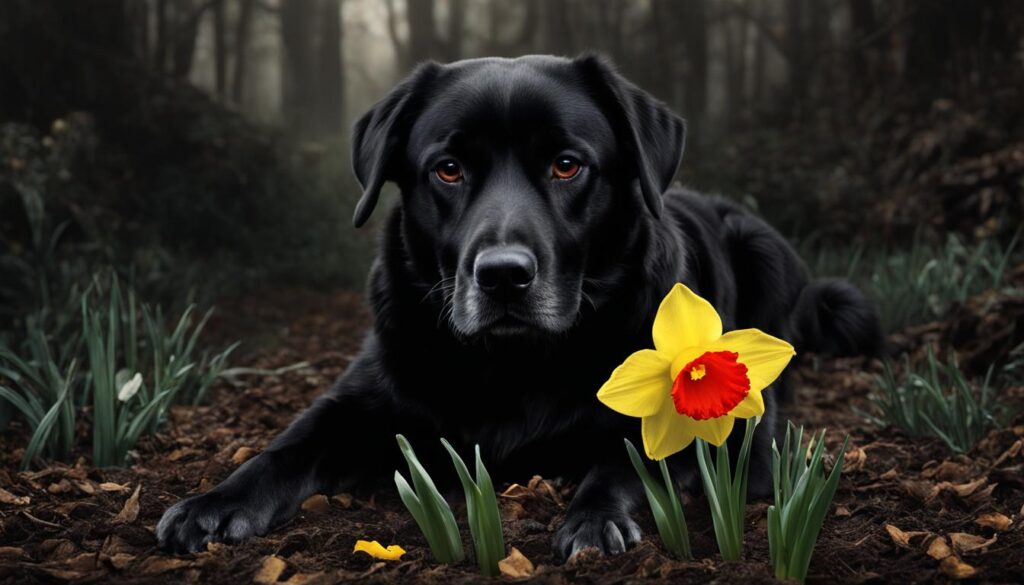
All parts of a daffodil plant are toxic to dogs, including the bulbs, leaves, stem, and flowers. However, the bulbs contain a higher concentration of lycorine and are therefore more dangerous if ingested. The dust that comes on daffodil bulbs is also toxic, and inhaling it can have a serious impact on a dog’s health and lungs, causing damage to the respiratory tract. Additionally, the water from a vase containing daffodils can be poisonous to dogs, so care must be taken to keep these plants out of their reach.
| Toxic Components | Effects |
|---|---|
| Bulbs | High concentration of lycorine Potential for severe gastrointestinal issues |
| Leaves | Contains toxic compounds Can cause symptoms like vomiting and diarrhea |
| Stem | Toxic properties Possible gastrointestinal discomfort |
| Flowers | Contain harmful substances Can lead to skin irritation if ingested or touched |
Risks and Potential Consequences of Daffodil Poisoning in Dogs
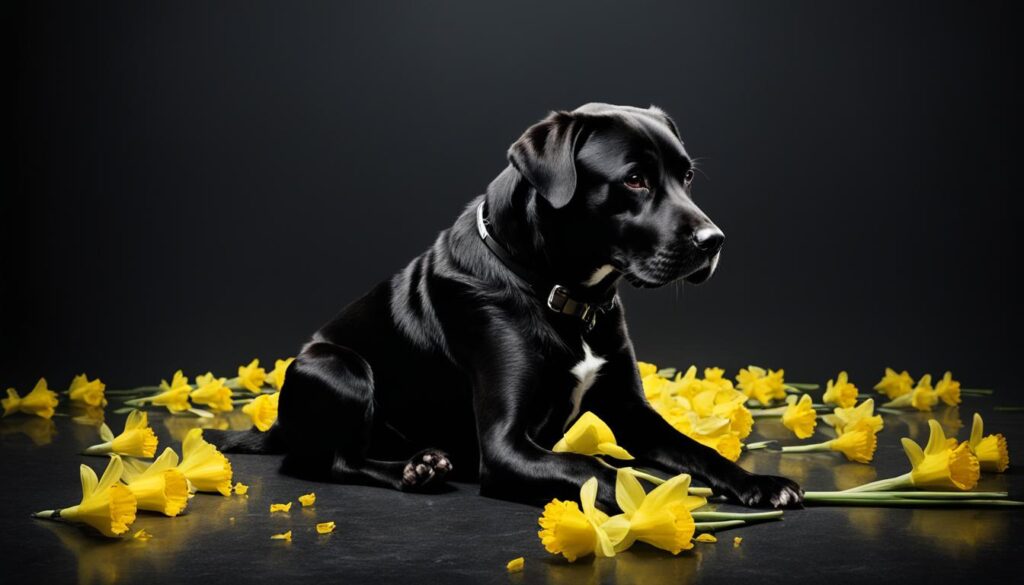
Daffodil poisoning can pose serious risks to dogs, especially if they consume a significant amount of the plant or bulbs. It is essential for pet owners to be aware of the dangers that daffodils present to their canine companions. Ingesting daffodils can have severe health consequences for dogs and may even be fatal in certain cases.
Risks of Daffodil Ingestion for Dogs
Ingesting a significant amount: Dogs that consume a large amount of daffodils or parts of the plant, particularly the bulbs which contain higher concentrations of the toxic compound lycorine, are at a higher risk of experiencing adverse effects.
Lethal dose: The lethal dose of daffodils for dogs, known as the LD50, is approximately 15 grams. This means that if a dog ingests this amount, there is a 50% chance of fatality. Therefore, it is crucial to take immediate action if you suspect your dog has ingested daffodils.
Dangers of Dogs Eating Daffodils: Dogs that eat daffodils can experience various health consequences, ranging from gastrointestinal issues to more severe effects on their cardiovascular and respiratory systems. These dangers highlight the importance of preventing dogs from accessing daffodils and seeking immediate veterinary care if ingestion occurs.
Health Consequences of Daffodil Poisoning in Canines
Daffodil poisoning can have a range of health consequences for dogs. The toxic compounds present in daffodils can affect different bodily systems, leading to a variety of symptoms and potential complications.
Gastrointestinal issues: Dogs that ingest daffodils may experience symptoms such as vomiting and diarrhea. These gastrointestinal disturbances can cause dehydration and electrolyte imbalances if left untreated.
Cardiovascular effects: Daffodil poisoning can also have an impact on a dog’s heart rate, potentially leading to abnormal rhythms and cardiovascular distress. It is crucial to monitor your dog’s heart rate and seek veterinary attention if you notice any irregularities.
Respiratory depression: The toxic compounds in daffodils can depress a dog’s respiratory system, leading to difficulty breathing and respiratory distress. This can be particularly problematic if a dog has inhaled the dust from daffodil bulbs, causing damage to their respiratory tract.
Given the potential health risks associated with daffodil poisoning, it is vital to prioritize the safety and well-being of your furry friend. Immediate veterinary care is crucial if you suspect your dog has ingested daffodils.
| Risks of Daffodil Poisoning in Dogs | Health Consequences of Daffodil Poisoning in Canines |
|---|---|
|
|
Treatment for Daffodil Poisoning in Dogs
When it comes to veterinary treatment for daffodil poisoning in dogs, there is no specific antidote available. The focus is on limiting the absorption of toxins and providing supportive care to help the dog recover.
If your dog has ingested daffodils or any part of the plant, it is important to seek immediate veterinary care. Here are some common therapies used in the treatment of daffodil toxicity in dogs:
- Inducing vomiting: In some cases, the vet may induce vomiting to remove the toxins from the dog’s stomach. This can help prevent further absorption of the toxic compounds.
- Activated charcoal administration: Activated charcoal is often given to dogs that have ingested toxic substances. It works by binding to the toxins in the digestive system, preventing their absorption into the bloodstream.
- Gastric lavage: Gastric lavage, also known as stomach pumping, is a procedure in which the vet washes out the stomach with a saline solution. This can help remove any remaining toxins from the dog’s system.
- Intravenous fluids: Intravenous fluids are administered to keep the dog hydrated and support the elimination of toxins from their body. This helps flush out the toxins more effectively.
- Oxygen therapy: If the dog has inhaled the dust from daffodil bulbs, oxygen therapy may be necessary to support their respiratory function and alleviate any breathing difficulties.
- Topical treatments: If the dog has come into contact with daffodil sap or has skin irritation, the vet may recommend topical treatments to soothe and heal the affected areas.
It is important to follow the guidance of a veterinarian in treating daffodil poisoning in dogs. The appropriate treatment will depend on the severity of the poisoning and the specific symptoms your dog is experiencing.
Other Spring Plants Poisonous to Dogs
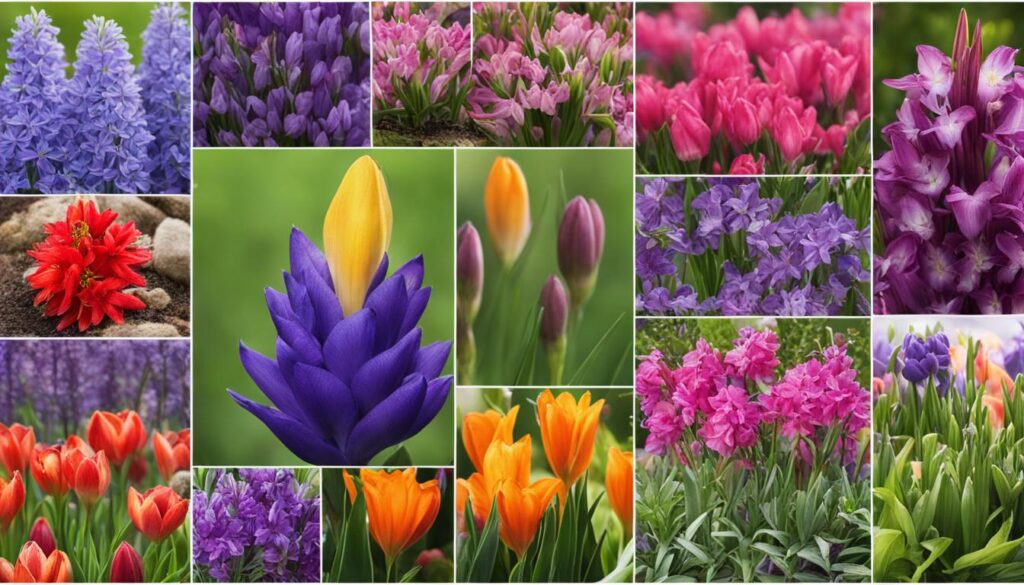
Daffodils are not the only plants that can be toxic to dogs during spring. There are several other spring plants that pet owners should be aware of, including tulips, bluebells, rhododendrons, azaleas, amaryllis, and many others. These plants can cause a range of symptoms and health issues if ingested by dogs. It is important to research and identify all potentially toxic plants in your surroundings, ensuring they are inaccessible to your pets to ensure their safety.
Here is a table illustrating some common poisonous plants for dogs in spring:
| Plant | Toxicity | Symptoms |
|---|---|---|
| Tulips | Highly toxic | Vomiting, diarrhea, drooling, difficulty breathing |
| Bluebells | Moderately toxic | Upset stomach, lethargy, tremors |
| Rhododendrons | Highly toxic | Cardiac arrhythmia, drooling, gastrointestinal upset |
| Azaleas | Highly toxic | Vomiting, diarrhea, weakness, collapse |
| Amaryllis | Highly toxic | Abdominal pain, drooling, vomiting, tremors |
It is crucial to keep these plants out of your dog’s reach and prevent them from being able to consume any part of the plant. If you suspect that your dog has ingested a toxic plant, contact your veterinarian immediately for guidance and possible treatment.
Wrapping Up
In conclusion, daffodils can pose a significant threat to dogs due to the presence of lycorine, a toxic compound found in their bulbs. Ingesting daffodils or any part of the plant can result in various symptoms, including gastrointestinal issues, drooling, lethargy, and skin irritation. If you suspect your dog has consumed daffodils, it is crucial to seek immediate veterinary care to mitigate the potential health risks.
Prevention is the key to safeguarding your pet’s well-being, and it is essential to keep daffodils and other potentially toxic plants out of your dog’s reach. Consulting a veterinarian for guidance on identifying and avoiding poisonous plants can help ensure your pet’s safety during the spring season and beyond.
Remember, a proactive approach is vital when it comes to protecting our furry companions. Stay informed, stay vigilant, and prioritize your dog’s health by providing a safe environment free from the dangers of daffodil ingestion and other toxic plants.
FAQ
Are daffodils poisonous to dogs?
Yes, daffodils can be toxic to dogs, especially if they consume the bulbs. While the flowers themselves are not dangerous, the bulbs contain a toxic substance called lycorine. This compound can cause health problems when ingested, and the bulbs have a higher concentration of lycorine compared to the flowers.
What are the signs of daffodil poisoning in dogs?
The symptoms of daffodil poisoning in dogs can vary, but some common signs to look out for include diarrhea, vomiting, abdominal pain, drooling, trembling, lethargy, and skin irritation.
What should I do if my dog eats daffodil flowers?
If your dog eats daffodil flowers, the first step is to remove any remaining flowers from their mouth to prevent further ingestion. It is then crucial to contact a vet immediately for guidance. The vet may advise simple measures such as providing your dog with a bowl of milk or water, but in more severe cases, they may recommend bringing your dog to the clinic for prompt medical attention.
Why are daffodils poisonous to dogs?
Daffodils are poisonous to dogs due to the presence of toxic compounds, specifically lycorine. These compounds, predominantly found in the bulbs of daffodils, can cause gastrointestinal issues when ingested. Additionally, daffodils contain calcium oxalate crystals, which can cause severe pain and irritation if consumed.
What parts of a daffodil are toxic to dogs?
All parts of the daffodil plant, including the bulbs, leaves, stem, and flower, are toxic to dogs. However, the bulbs contain a higher concentration of lycorine and are therefore more dangerous if ingested.
What are the risks and potential consequences of daffodil poisoning in dogs?
Daffodil poisoning can pose serious risks to dogs, especially if they consume a significant amount of the plant or bulbs. The LD50 for daffodils is 15g for dogs, meaning that ingesting this amount can be lethal for 50% of dogs. Symptoms of daffodil poisoning can include gastrointestinal issues, abnormal heart rate, respiratory depression, and difficulty breathing.
What is the treatment for daffodil poisoning in dogs?
There is no specific antidote for daffodil poisoning in dogs. Veterinary treatment for daffodil ingestion typically focuses on limiting the absorption of toxins and providing supportive care. This may involve inducing vomiting, administering activated charcoal, performing gastric lavage, and intravenous fluids. Treatment may also include oxygen therapy for dogs who have inhaled the dust from daffodil bulbs or topical treatments for skin exposure.
Are there other spring plants poisonous to dogs?
Yes, daffodils are not the only plants that can be toxic to dogs during spring. Other potentially toxic plants for dogs include tulips, bluebells, rhododendrons, azaleas, and amaryllis, among others. It is important to research and identify all potentially toxic plants in your surroundings to ensure your pet’s safety.
Can you summarize the effects of daffodil ingestion in dogs?
Daffodils can be poisonous to dogs, with the bulbs containing a toxic compound called lycorine. Ingesting daffodils or parts of the plant can lead to various symptoms, including gastrointestinal issues, drooling, lethargy, and skin irritation. Prompt veterinary care is essential if you suspect your dog has ingested daffodils.


